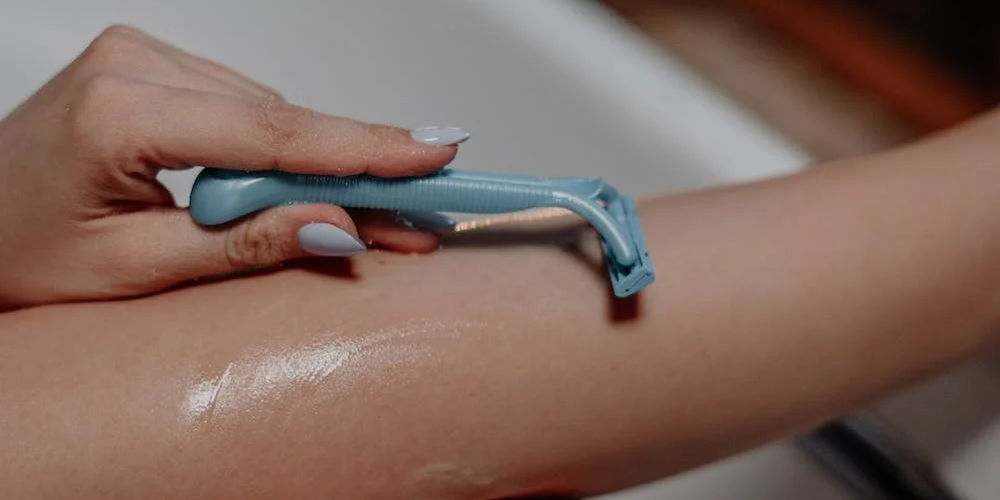
Even though they can come in handy, disposable razors aren’t good for the environment or your health. Disposable razors are usually meant for one-time use, but they can last for three to 10 shaves before becoming incredibly dull and irritating your skin. After they become dull and start providing an underwhelming shave, they are tossed into the trash.
But aside from adding unnecessary single-use plastic to landfills, disposable razors also contain harmful ingredients that everyone should be aware of.
The dangerous ingredients found in disposable razors
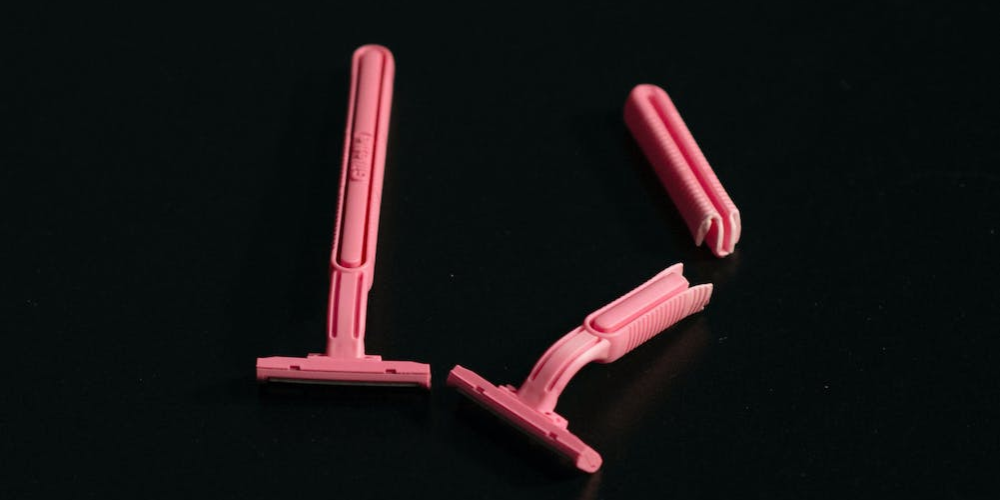
“Where are the harmful ingredients hidden?” You may ask. Most people don’t think twice about the moisture strip built-in on each disposable razor, which claims to provide your skin with some hydration after your razor glides over each hair. These razor strips may contain endocrine-disrupting chemicals (EDCs) that can impact your metabolism and hormonal health.

Depending on the brand you select, the moisture or lubricating strip may contain butylated hydroxytoluene (BHT), a lab-produced chemical that is most commonly used as a preservative in food. When it comes to cosmetic products, BHT can be used as a stabilizer and is considered safe in smaller doses. However, studies have shown that long-term exposure to BHT can have lung and liver tumour-promoting effects in some animals.
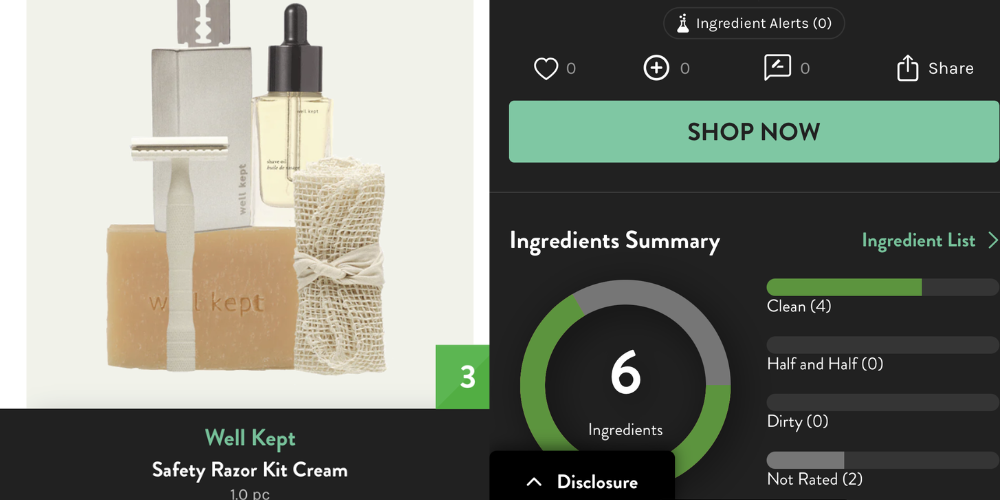
For this reason, we suggest sourcing a biodegradable razor that does not have a moisture strip or one that does not contain any potentially toxic ingredients. In lieu of a moisture or hydrating strip, slather your legs in a vegan, non-toxic moisturizer after hopping out of the shower.
The environmental impacts of disposable razors
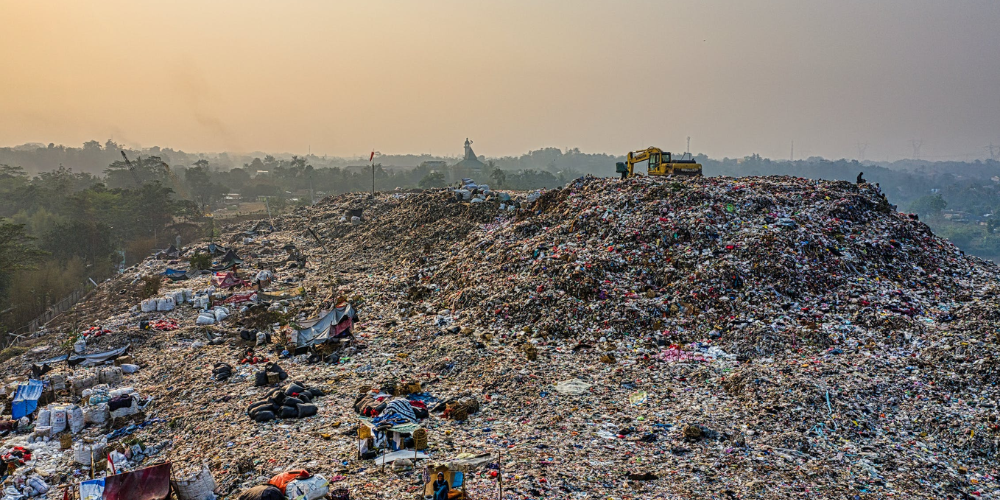
It’s no surprise that our landfills are overflowing with single-use plastic. These harmful types of plastic leach chemicals and toxins into the surrounding environment when left to degrade in the landfill. Bisphenol-A (BPA) is one of these harmful chemicals, which can even have endocrine-disrupting impacts when humans are exposed to degrading single-use plastics.
Disposable razors are also non-biodegradable, which means parts of the razor, like the plastic handle, will take up space in the landfill for decades or even centuries. As for the metal razor blades, these will eventually rust away to nothing.
So, next time you’re thinking about tossing a package of disposable razors into your shopping cart at the drugstore, remember that they will end up harming our precious, vulnerable environment.
The solution
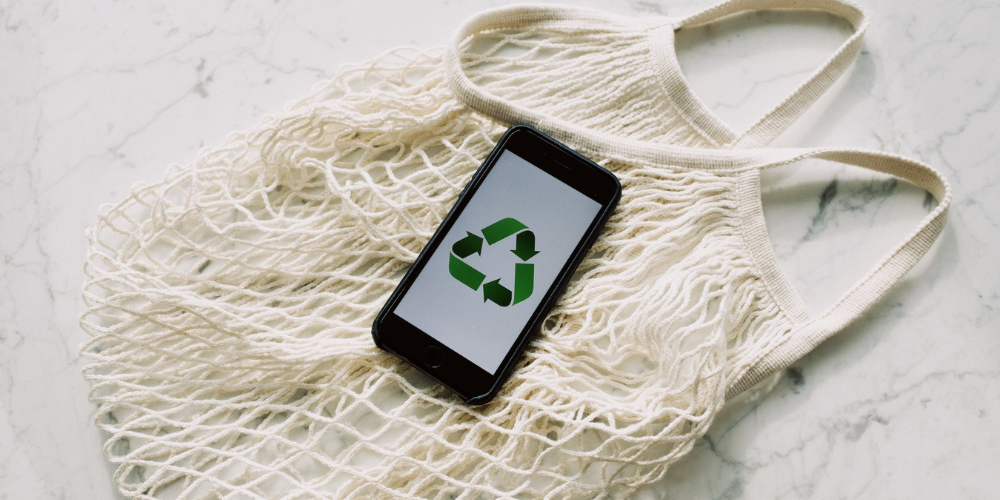
Another reason to ditch the disposable razor is that they aren’t even great for your skin. Because the razor blades are cheaply made, they dull very easily, giving you a shave that ends up tugging on your hair. Disposable razors and ingrown hairs really go hand-in-hand.
Thankfully, there is an alternative to disposable razors that are much more environmentally friendly and safer for your skin and overall health. Safety razors are made completely out of metal and the best kinds are made with stainless steel, making them recyclable. Since these razors are made out of stainless steel or other high-quality types of metal, the blades stay sharper for longer, providing a close shave that won’t tug on your hair. Depending on the model, a safety razor may have a wooden or bamboo handle that makes them easy and comfortable to use.
Once you’ve found yourself a reliable, eco-conscious safety razor, you’ll need a clean shaving cream or shaving bar, and then you’re well on your way to smooth skin without compromising your health or the environment. The Think Dirty App can help you find that too! Download it here.
We are a professional review and product rating website and mobile app that receives compensation from the companies whose products we review and rate. We are independently owned and the opinions expressed here are our own interpretations of a trusted source. This blog post may contain affiliate links.
The Hidden Dangers of Disposable Razors: Unveiling the Environmental and Health Implications was originally published in Think Dirty on Medium, where people are continuing the conversation by highlighting and responding to this story.